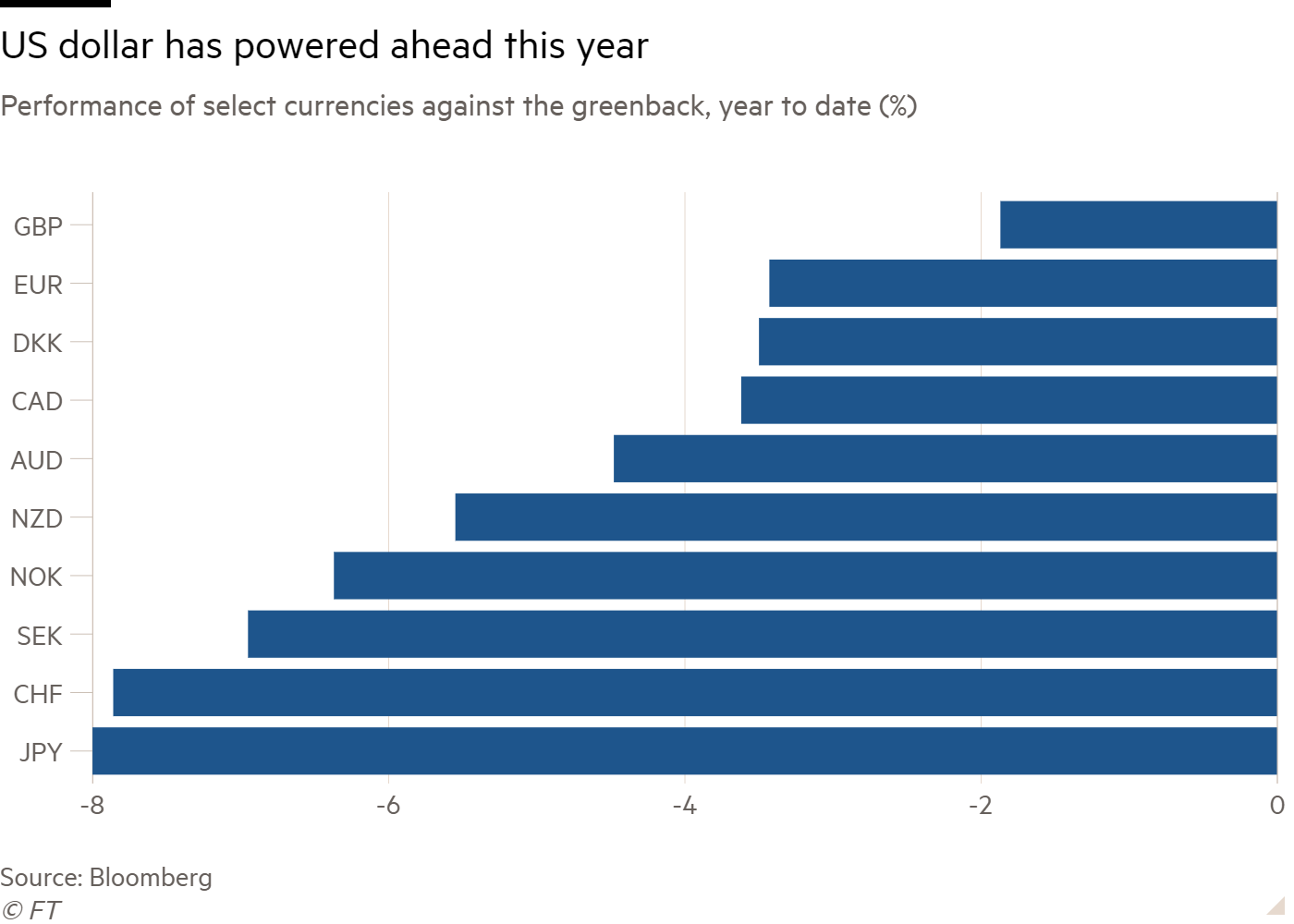Unlock the Editor’s Digest for free
Roula Khalaf, Editor of the FT, selects her favourite stories in this weekly newsletter.
The dollar has notched up its strongest weekly performance since 2022 after outsize US inflation figures caused ripples through world markets.
The US currency has strengthened by 1.5 per cent against a basket of six currencies since Monday, its best weekly performance since September 2022, as traders reversed bets on early interest rate cuts by the Federal Reserve.
The euro and sterling fell to their weakest levels against the dollar since November on Friday at $1.0646 and $1.2469, respectively, while the yen sank to ¥153.26 hitting a fresh 34-year low.
“The US is its own special case with very loose fiscal policy and now tight monetary policy, which is a recipe for a stronger dollar,” said Quentin Fitzsimmons, a senior portfolio manager at T Rowe Price. “The buzzword that is going through markets at the moment is divergence.”
This week’s increase in US consumer price inflation — which hit a higher than expected 3.5 per for March — has prompted traders to increase bets that the Fed might deliver as few as one rate cut this year.
That compares with expectations of as many as six quarter-point cuts at the start of January.

On Thursday, the European Central Bank signalled it was still on course to deliver interest rate cuts in June. Pressure on the euro increased because of growing expectations that eurozone interest rates will fall ahead of those in the US.
“It looks like a happily divergent ECB has sent the euro weaker against the dollar,” said Chris Turner, head of global markets at ING.
The shift in sentiment helped push the spread — or gap — between benchmark 10-year US and German government borrowing costs to 2.15 percentage points, its highest level since 2019.
Speculation also rose that Sweden’s Riksbank could cut interest rates as soon as May after the country reported lower than expected inflation on Friday.
Sustained dollar strength could cause problems for countries looking to cut rates without undermining their currencies and accelerating price rises.
“Other central banks clearly don’t want their currencies to weaken materially . . . what it means is effectively you will end up importing more inflation” said James Novotny, a portfolio manager at Jupiter Asset Management.
Markets are betting that the ECB will deliver at least three cuts by the end of the year, compared with the Fed’s expected one or two reductions.
Japan’s currency has suffered most from the rise in US rate expectations, which has pushed the yen to its weakest level since 1990, putting the finance ministry on red alert for a possible intervention.
Masato Kanda, Japan’s vice-finance minister for international affairs, told reporters on Thursday that authorities would not rule out any measures to address excessive moves in the exchange rate.
Mark Dowding, chief investment officer at RBC BlueBay Asset Management, said the impact of any intervention would be expensive and temporary.
“The yen has been undermined by policy from the [Bank of Japan], which is too accommodative,” he said. “It looks like the yen remains vulnerable just because the policy gap remains achingly wide.”
Read More: World News | Entertainment News | Celeb News
FT









